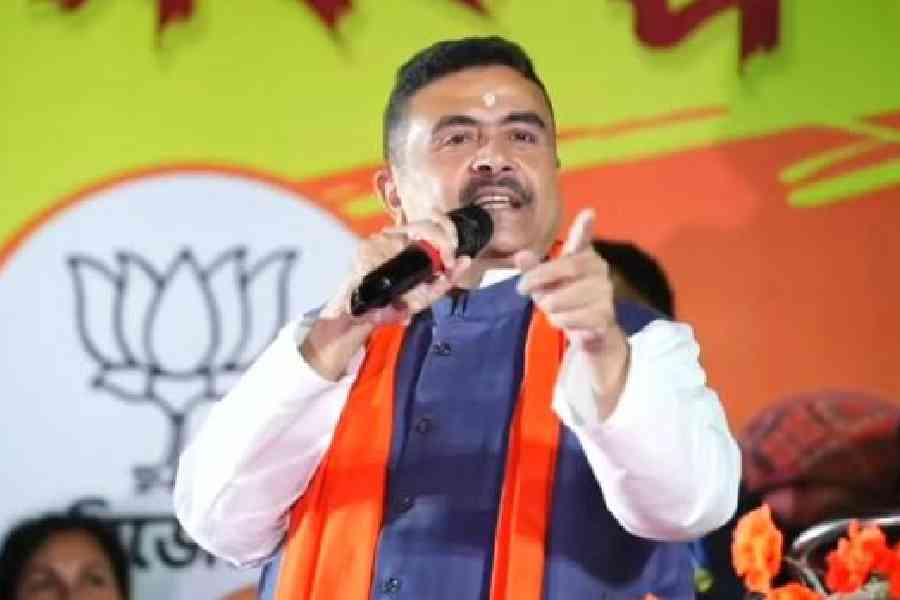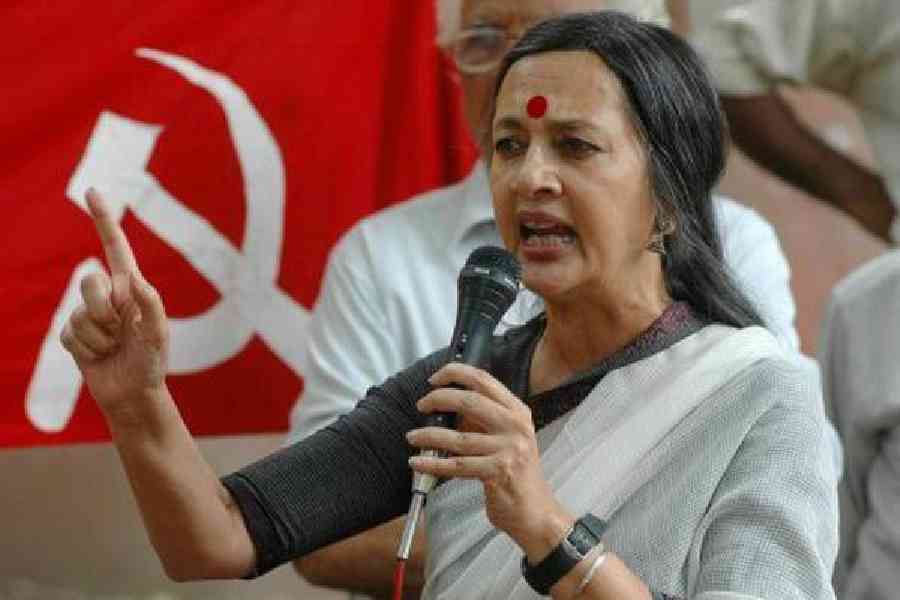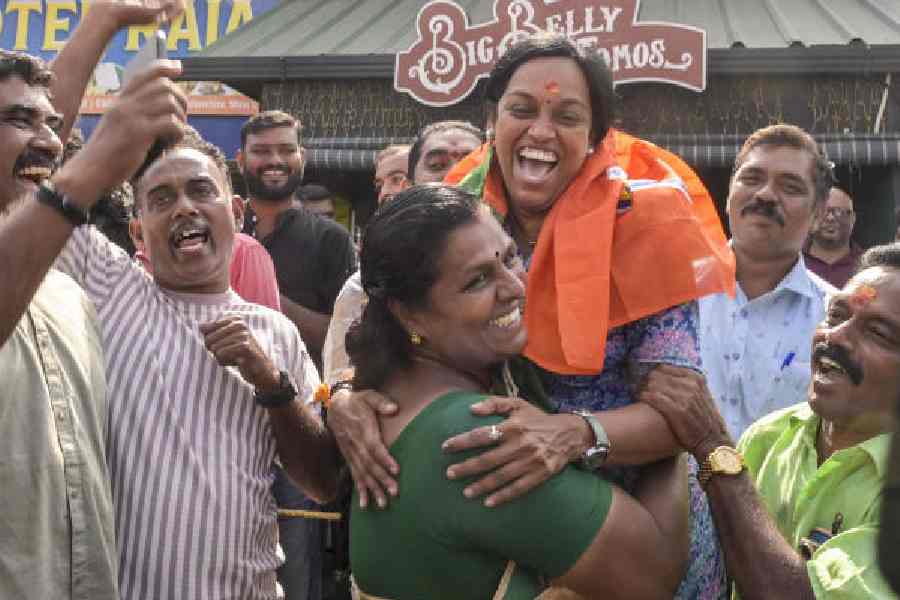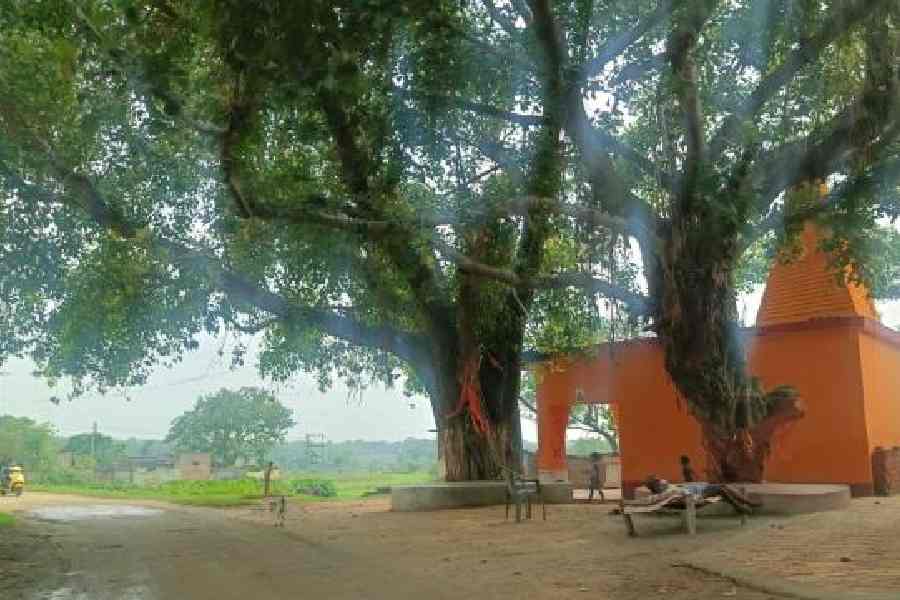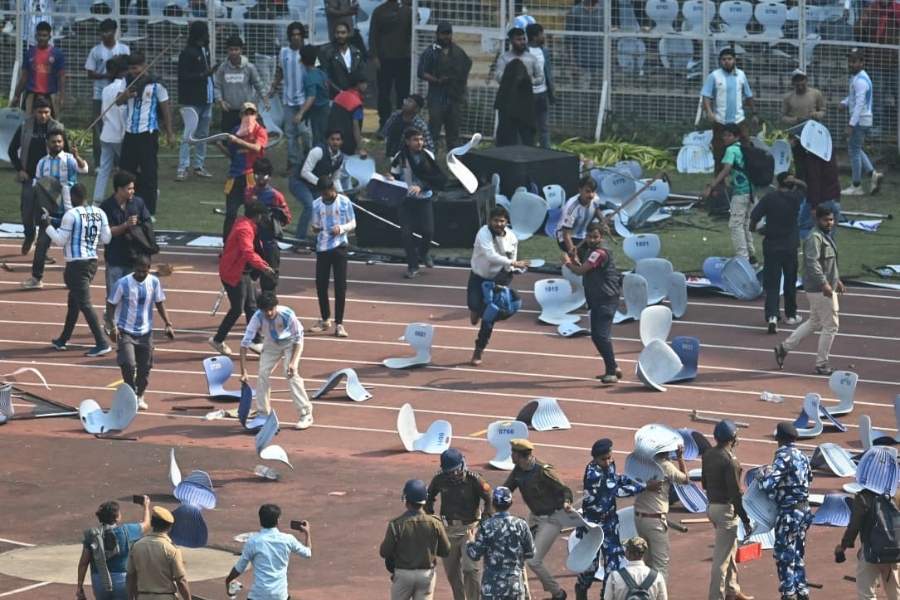 |
| Chief minister Tarun Gogoi releases the white paper in Guwahati on Saturday. (PTI) |
Guwahati, Oct. 20: The foreigners issue is not the number one problem of Assam but unemployment is.
Chief minister Tarun Gogoi made this assertion during the release of the much-awaited white paper on the foreigners issue in Assam, a 94-page booklet of “consolidated” statement of facts and figures, ostensibly aimed at neutralising the bid to revive the foreigners agitation in the wake of the BTAD riots since July.
“It is not the number one problem as some sections want the outside world to believe because facts and figures do not show it. Unemployment is,” he said in response to a query on the foreigners issue.
Asked what his message to the protesters would be, he said, “It is not the only problem. Unemployment is much more serious than the foreigners issue today. The government is concerned about the issue (illegal migrants) and is working towards resolving it”.
The white paper, the first of its kind, was released at the packed chief minister’s conference hall in the presence of ministers Nazrul Islam, Prithibi Majhi, Himanta Biswa Sarma, Nilamani Sen Deka, DGP J.N. Choudhury, additional chief secretary P.P. Verma, commissioner to the chief minister, Jishnu Baruah, and principal secretary (home), Sailesh, among others.
Outside the hall, there was a huge cutout of a smiling Gogoi releasing the white paper, ostensibly aimed at making the occasion “momentous” even though few within and outside were convinced about the efficacy of the exercise which had seen both the chief minister’s office and the home department working late into the day to complete the booklet.
In an attempt to give a historical perspective to the problem, which has been traced to the days of the British Raj, Gogoi said in his opening remarks, “The white paper will form the basis of future research on the issue. It spells out why so much migration took place. There are both economic and other reasons like the riots that followed Partition and creation of Bangladesh.”
The white paper spells out in detail steps taken for the detection and deportation of foreigners, to check infiltration, for sealing the international border and a commitment to implement the 1985 Assam Accord.
It also mentions the road ahead, including update of the 1951 NRC within three years, completing the UAID project, fencing the border and strengthening the foreigners tribunals, among others.
The white paper appears to be the first salvo from the Congress-led government to check the growing propaganda against it for allegedly doing nothing to check the problem. Sources privy to the preparation of the paper said it was an “honest and objective” look at the problem and releasing a consolidated statement of facts and figures in the public domain.
It is a joint effort of the government and the party, which got unnerved with widespread protests that followed the BTAD riots. More so because of the ensuing panchayat elections which will be followed by the general elections.
“The white paper was a must to remove doubts and confusion in the minds of the public. Most don’t know, for which all sorts of wild allegations are being directed against the government and the party. There was no agitation when the AGP is in power but the issue returned to centrestage when the Congress is in power. An attempt is being made to divert attention from the development agenda by playing on the emotions of the gullible public before the panchayat polls. This white paper aims to leave it to the public to take a call on who has done what,” a veteran Congress MLA said.
This was even borne out by Gogoi’s observation during the release. “Our government has done more to resolve the issue than the Prafulla Kumar Mahanta-led government or the BJP-led government at the Centre. They rake up the issue only when there is an election around the corner.”
Notwithstanding Gogoi’s assertion, the white paper is likely to be panned, sources said.
“We are yet to go through it but questions will be raised as to why it took Gogoi 12 years to come out with a white paper. Isn’t it driven solely by electoral motives? Isn’t the government trying to belittle the issue by saying that it is not the number one problem or a major problem after several hundred had died fighting for ouster of foreigners. More than history, Gogoi should have come out with a concrete timeframe to resolve the problem,” an Opposition leader, not willing to be named just yet, said.
What is it all about
The white paper is a milestone in the history of the illegal migrants problem in Assam.
Sources associated with its preparation said its purpose was “to take an honest and objective look at the problem and release a consolidated statement of facts and figures in the public domain for the people to know and to take a call on what is what and who is doing what on the issue”.
This is the first time that any government, Congress or otherwise, has tabled a white paper on the issue on the floor of the Assembly.
That the Congress government decided to table a white paper is remarkable since Congress chief ministers in the past have denied the very existence of illegal Bangladeshis in Assam.
The downside
The government makes an attempt to whitewash certain historical aspects of the issue, including the fact that the arrival of illegal Bangladeshis in Assam started not just as a simple migration between Assam and erstwhile East Bengal in undivided India. No mention is made, for example, of the “Grow More” programme initiated by Assam’s “premier” Sir Syed Mohammed Sadullah in 1937. The programme had involved relocation of people from Assam’s Mymensingh district to Assam to grow more foodgrain. As one British officer said, it was not a programme to grow more grain but to grow more people of a certain community. Sadullah’s programme was opposed by Maulana Md Tyebullah and Gopinath Bordoloi, both Congressmen. Equations, however, changed after Congress leaders began to come to power with votes from illegal migrants.
The white paper attempts to equate the migration of people from Mymemsingh to that of people from Rajasthan and other areas in India, which is not entirely true.
“It is positive to note some beneficial effects of migration of peasants from East Bengal,” says the white paper. “Because of the agricultural practices of the hardworking immigrants and their contribution to the agricultural economy, rice production increased significantly. A number of vegetables and crops were also introduced by the migrants”.
The upside
The white paper puts in the public domain a list of aspects concerning the illegal migrants issue and its handling. It says:
(a) The definition of the terms “illegal migration” and “illegal immigrants” is “far from being complete”.
(b) “The effectiveness of any drive against illegal migration in the early fifties was handicapped by the fact that passport and visa regulations between India and Pakistan came into operation only from October 1952”.
(c) The Registrar General of Census in his report on the 1961 census assessed that 2,20,691 infiltrants had entered Assam.
(d) During 1961-66, 1,78,952 infiltrants were either deported or had voluntarily left the country but an estimated 40,000 did not leave India. “The issue of eviction of infiltrants was deliberated several times by the cabinet during 1964-66 and there was general consensus that any stoppage of deportation would seriously affect the internal situation in Assam”.
(e) Representation made by several organisations about harassment to bonafide Indian citizens and adverse publicity in international media led to the creation of the Foreigners (Tribunal) Order in 1964 to introduce a “judicial element in the eviction of Pakistani infiltrators”. By 1968, there were nine Foreigners Tribunals.
(f) In 1969, the government decided that only (a) Pakistani nationals who held Pakistani passports (b) Reinfiltrants who had been deported before and (c) Fresh infiltrants caught at the border should be deported. “Superintendents of police were further instructed that there should be no wholesale checking of villages and houses.”
(g) In 1965, the government of India took up with the state government the issue of updating the National Register of Citizens (NRC) and to issue identity cards which Indians citizens in Assam were to carry on a voluntary basis.
(h) Currently, lack of judicial supervision, long vacancies of members and inadequate staff has led to “large number of cases pending in some of the tribunals”. There are 36 tribunals in Assam to deal with illegal migrants. There are still 65,000 unregistered cases.
(i) A total of 1,06,587 cases have been referred to the tribunals. Of them 70,152 have been disposed, 36,435 are pending. Of the people tried, 41,660 have been declared foreigners and 884 have been pushed back.
(j) Survey and surveillance is carried out generally in the areas of new settlements, construction sites, encroached land, government land, forest land and hitherto uninhabited land to identify and detect foreigners.
(k) Most foreigners are found to be working as daily wage earners and rickshaw pullers who live in rented houses.
() There is a difference between “push back” and “deportation”. In the case of push back, there is no need for acceptance of the person concerned by the Bangladesh Border Guards (BGB). In case of deportation, there is a proper flag meeting between the BGB and the BSF and deportation takes place only when the BGB accepts the foreigner. If the BGB refuses to accept the person, “the BSF is left with no option and such persons become stateless in a way”.
(m) “The matter of deportation of foreigners who have illegally entered into India needs to be taken up by the government of India with the government of Bangladesh so that a proper policy can be evolved and the process of deportation of such foreigners becomes easier and hassle free.”
() As for D-Voters, 2,31,657 cases have been referred to the tribunals so far. Of them, 87,589 cases have been disposed. Of these, 6,400 have been declared foreigners, 43,465 have been declared Indians and in 37,724 cases “no opinion could be expressed”.
How many foreigners are there?
The AGP-led government had stated in 1986 “there is no definite information”. In 1996, it said the “exact number of foreigners and illegal migrants in Assam cannot be estimated as it is a fact of history and continuous process.” Former chief minister Hiteswar Saikia had once put out a figure of 30 lakh, but withdrew it on the double.
Figurespeak
(a) Decadal population growth higher than the rest of the country through major part of 20th century but fell below it between 1991 and 2011 (provisional).
(b) Muslim population rose from 12.4 per cent in 1901 to 30.92 in 2001, which is the highest in the country with West Bengal and Kerala following at 25.25 per cent and 24.7 per cent respectively.
Now what?
(a) Tribunals to dispose cases within 60 days
(b) Tribunals, Border Wing of Assam Police being strengthened
(c) More tribunals proposed
(d) Updating of NRC
(e) Unique Identification scheme to develop comprehensive database for the entire resident population of the country
(f) Activate local thana-level committees for detecting foreigners at the grassroots


